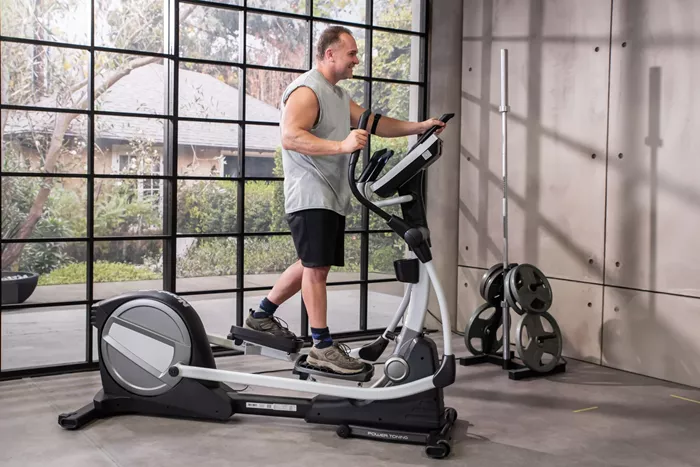Devlin Donaldson didn’t think he could take another step. “I got to go home,” he recalls telling his wife while strolling around their neighborhood. “I’m exhausted.”
Donaldson had recently enrolled in Twin Health, a health program designed to help him get off his medications and put his type 2 diabetes into remission. The program made personalized recommendations via his phone about diet, sleep, and increasing daily activity, including a goal of 10,000 steps per day.
“Like any workout, it’s always the most painful in the first few days,” he told Business Insider. “When they said, ‘you’ve got to walk 10,000 steps,’ I went, ‘you’re crazy. That is not going to happen.'”
Yet, those extra steps have played a crucial role in managing his weight, regulating his blood sugar, improving his cholesterol, and lowering his blood pressure. Here are three key strategies that helped him achieve these results, putting his diabetes into remission, shedding around 40 pounds, and losing 10 inches from his waistline.
Tip 1: Get Up for a Walk
These days, when Donaldson notices his blood sugar rising on his continuous glucose monitor, he takes action.
“There are all kinds of things I know now I can do to stop that rise in glucose,” he said. One of the simplest is taking a walk.
Initially, walking was challenging. “The first time I went out to walk, my wife was with me. I asked, ‘How far have we gone?’ She said, ‘2,500 steps.’ I was exhausted.”
Now, Donaldson enjoys walks up to four times as long. “As long as I keep it consistent, I actually feel better at the end of five miles than I do when I start,” he said.
Experts agree that you don’t need to hit 10,000 steps to benefit from daily movement. Even walking 2,000 to 4,000 steps a day can significantly reduce the risk of death, particularly from heart issues. “If anybody can commit and say, ‘I’m going to do this for a month, or for two months,’ and just do it for that long, and you don’t even have to get to the 10,000,” Donaldson said. “Get to 6,000, get to 8,000.”
Recent studies support this, showing that even modest increases in daily steps can yield significant health benefits. The key is regular movement to keep your heart pumping, blood flowing, and oxygen circulating.
After about three or four months of feeling lethargic, Donaldson’s “energy flipped.” Suddenly, he found himself more active around the house, taking out the trash and doing the dishes. “My energy went off the chart, and that’s an unbelievable gift.”
Donaldson’s program also recommended eating non-starchy vegetables before the rest of his meal. Sometimes he starts with asparagus, celery, or cauliflower, and he enjoys snacks like broccoli and cheese or a salad before dinner.
Nutrition experts suggest that for people with type 2 diabetes, this strategy can help control blood sugar and slow down digestion. “That’s really good advice actually, in type 2 diabetes, to have either the veggies first and/or the protein, and the carbohydrates last,” said Nicola Guess, a registered dietician at Oxford University.
For those without diabetes, the benefits of this eating sequence are less clear, but for Donaldson, it has made a noticeable difference.
On the advice of his digital twin, Donaldson started diluting a teaspoon of apple cider vinegar (ACV) in an 8-ounce glass of water throughout the day. Though initially skeptical, his continuous glucose monitor showed that ACV helped lower his blood sugar.
While some nutrition experts remain cautious about ACV due to its acidity, which can cause long-term issues if consumed in large amounts, Twin Health emphasizes personalized advice. “We don’t recommend ACV to people with acid reflux, dental problems, or other medical conditions impacted by high acidity foods,” the company said.
Donaldson doesn’t particularly enjoy the taste but appreciates how ACV helps manage his blood sugar levels. He acknowledges that while the app has guided him to smarter eating and moving strategies, his success ultimately depends on his own efforts.
“At the end of the day, you’re the one going for the walk and deciding what to eat,” Donaldson said. “My twin is along for the journey with me, but it is my journey, and I’ve got to invest.”
































